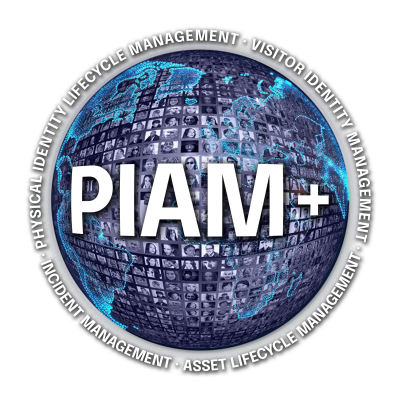
Food Defense Strategic Implementation
Operationalizing ASIS Framework Through Technology Integration from MERON
Executive Overview
Food and beverage companies face escalating security challenges that extend beyond traditional quality control into deliberate contamination, workforce threats, and supply chain vulnerabilities. The 2014 incident in Japan, where a contractor deliberately contaminated frozen foods affecting 2,800 consumers, exemplifies how trusted personnel can exploit access privileges to cause widespread harm.
Intentional Contamination
Coordinated efforts to compromise product integrity through deliberate introduction of harmful substances during production or distribution.
Insider Exploitation
Personnel with legitimate facility access leveraging their position to bypass security controls and compromise operations.
Third-Party Risk
Vendors, contractors, and visitors introducing vulnerabilities through inadequate screening or compromised supply relationships.
Business Case: Current security approaches rely heavily on perimeter controls and trust-based access, leaving organizations vulnerable to sophisticated internal threats. The Meron PIAM+ platform addresses these gaps by implementing identity-centric security that aligns with ASIS recommendations while providing measurable governance outcomes.
Most contamination events originate from personnel with authorized access who understand facility operations and can circumvent traditional security measures. Current trust-based systems provide inadequate visibility into behavioral anomalies or privilege escalation.
- Static Permissions: Role assignments rarely updated, creating access drift over time
- Limited Monitoring: No behavioral baseline to detect unusual activity patterns
- Investigation Gaps: Insufficient audit trails linking specific individuals to sensitive areas
- Trust Dependencies: Security relies on assumption that authorized personnel remain trustworthy
- Dynamic Access Control: Permissions automatically adjusted based on role changes and risk factors
- Behavioral Analytics: Machine learning identifies deviations from normal access patterns
- Complete Auditability: Every interaction logged with identity verification and timestamping
- Zero Trust Architecture: Continuous verification regardless of previous access history
Expected Outcome
Contractors, vendors, and visitors represent significant security gaps in most facilities. Manual processes for credential verification and access tracking create compliance risks and limit forensic capabilities during incident investigation.
- Manual Verification: Paper-based systems prone to errors and manipulation
- Persistent Access: Temporary credentials often remain active beyond intended duration
- Limited Screening: Insufficient background validation for higher-risk access levels
- Audit Challenges: Inconsistent documentation across different facility locations
- Digital Pre-Screening: Automated background checks with risk scoring integration
- Time-Bounded Access: Credentials automatically expire based on visit parameters
- Real-Time Validation: Continuous verification against current threat intelligence
- Centralized Records: Unified system across all facilities for consistent compliance
Expected Outcome
High-value assets including processing equipment, ingredient storage, and water systems require enhanced protection beyond traditional surveillance. Regulatory frameworks increasingly mandate identity-linked monitoring for these sensitive areas.
- Anonymous Interactions: Traditional cameras cannot definitively identify individuals
- Detection Delays: Contamination often discovered only during quality testing phases
- Access Complexity: Multiple personnel types require different permission levels
- Compliance Requirements: FDA HARPC mandates documented access controls
- Zone-Based Controls: Granular permissions tied to specific equipment and areas
- Identity Verification: Every asset interaction linked to verified personnel records
- Predictive Monitoring: AI-driven alerts for unauthorized access attempts
- Regulatory Alignment: Automated documentation meets FDA and GFSI requirements
Expected Outcome
Food defense effectiveness depends on workforce awareness and response capabilities. Traditional training approaches fail to demonstrate competency or adapt to evolving threat landscapes, creating both operational and compliance risks.
- One-Time Events: Annual training insufficient for dynamic threat environment
- Attendance Focus: Emphasis on completion rather than knowledge retention
- Manual Tracking: Spreadsheet-based systems unable to demonstrate readiness
- Audit Exposure: Inspectors increasingly demand competency evidence
- Role-Based Training: Customized content based on access levels and responsibilities
- Knowledge Assessment: Regular testing to verify understanding and retention
- Continuous Updates: Microlearning modules for emerging threats and procedures
- Performance Analytics: Individual and organizational readiness dashboards
Expected Outcome
Performance Measurement Framework
Food defense programs require quantifiable metrics that demonstrate effectiveness to stakeholders, regulators, and board members. Key performance indicators should align with both operational security and governance requirements.
Threat Detection
Response Speed
Access Compliance
Audit Readiness
Strategic Implementation Path
The intersection of regulatory requirements, operational complexity, and stakeholder expectations necessitates a technology-enabled approach to food defense. Organizations implementing comprehensive identity and access management achieve measurable improvements across key performance areas:
ASIS International provides the strategic framework.
Meron PIAM+ delivers measurable operational results.
Data Sources and References
Economic Impact Analysis
- $17.6 Billion Economic Burden: U.S. Department of Agriculture, Economic Research Service. "Economic Burden of Major Foodborne Illnesses Acquired in the United States." Analysis of foodborne pathogens in 2018 adjusted dollars.
- $7 Billion Direct Incident Costs: PMC study analyzing estimated annual economic impact of food safety incidents on U.S. economy.
- Industry-Specific Losses: Case study analysis including 2018 romaine lettuce E. coli outbreak impact assessment.
Threat Intelligence and Case Studies
- Japan Frozen Foods Incident: ASIS International documentation of 2014 contamination event involving 2,800 affected consumers through deliberate pesticide introduction by contracted personnel.
- Insider Threat Cost Analysis: Industry research indicating average financial impact of $715,366 per malicious insider incident in 2025.
- Threat Trend Analysis: Multi-year studies showing increased insider threat activity detection across organizations.
Regulatory and Standards Framework
- FDA HARPC Requirements: Food Safety Modernization Act (FSMA) Hazard Analysis and Risk-Based Preventive Controls regulations.
- ASIS International Guidelines: "Practical Guidance for the Food & Beverage Industry" comprehensive security framework.
- GFSI Benchmarking: Global Food Safety Initiative standards for food defense program implementation.
- Additional References: NIST Cybersecurity Framework, USDA Food Safety and Inspection Service guidance documents.
Data Verification Statement
All statistical claims have been verified against published government and industry sources. Detailed research methodologies and additional citations are available upon request. Economic figures represent most recent available data and may vary based on incident scope, industry segment, and geographic factors.


